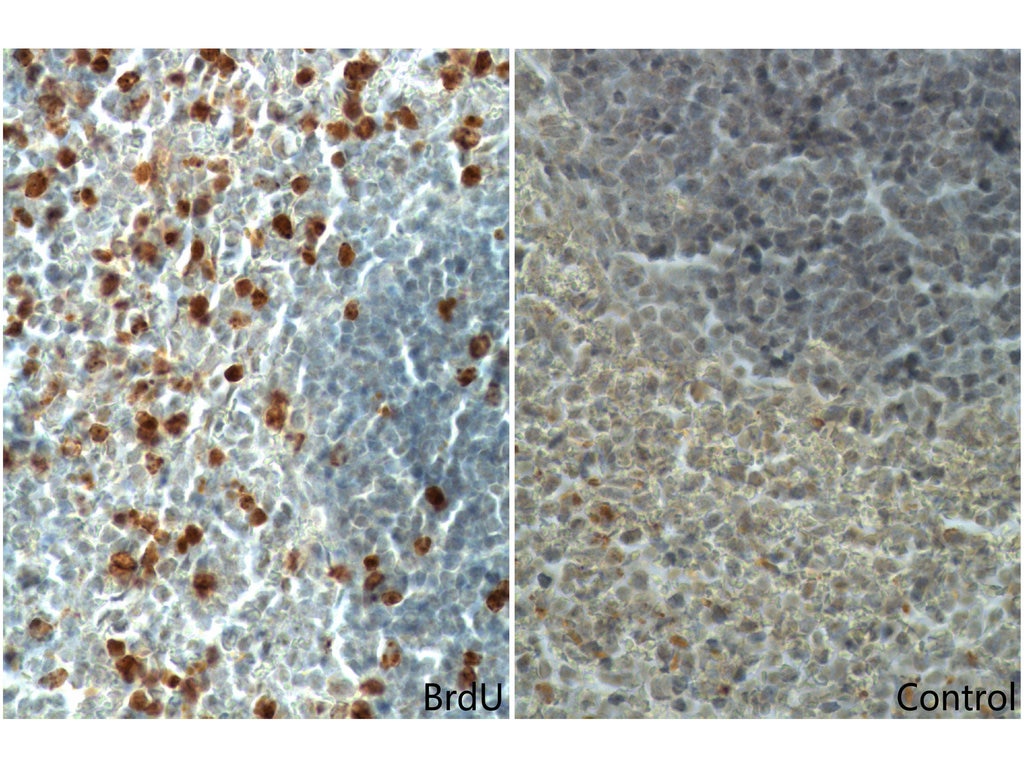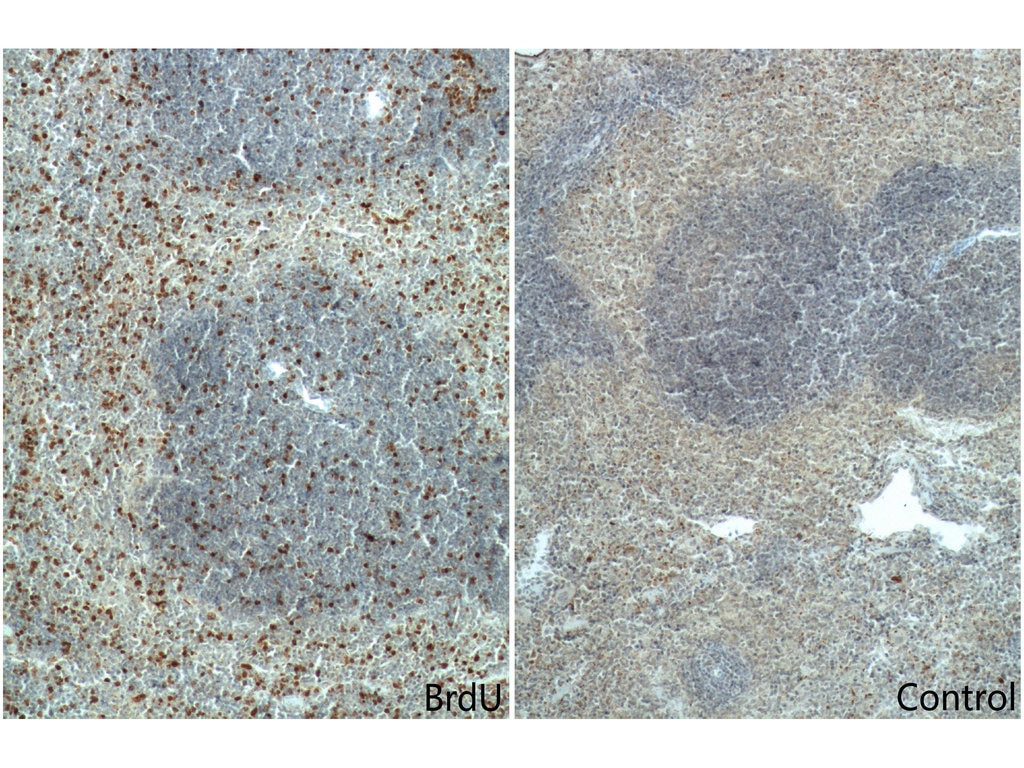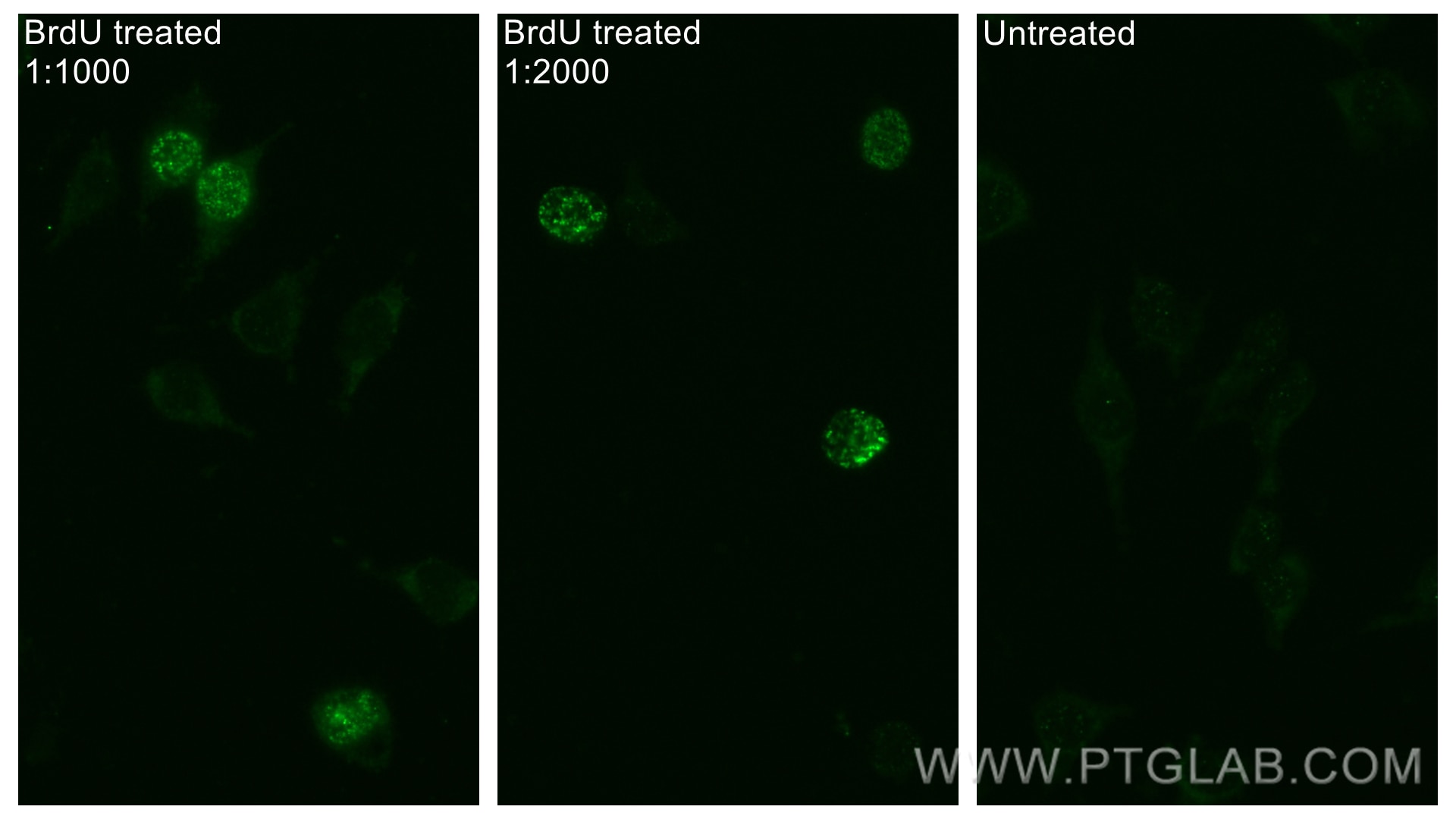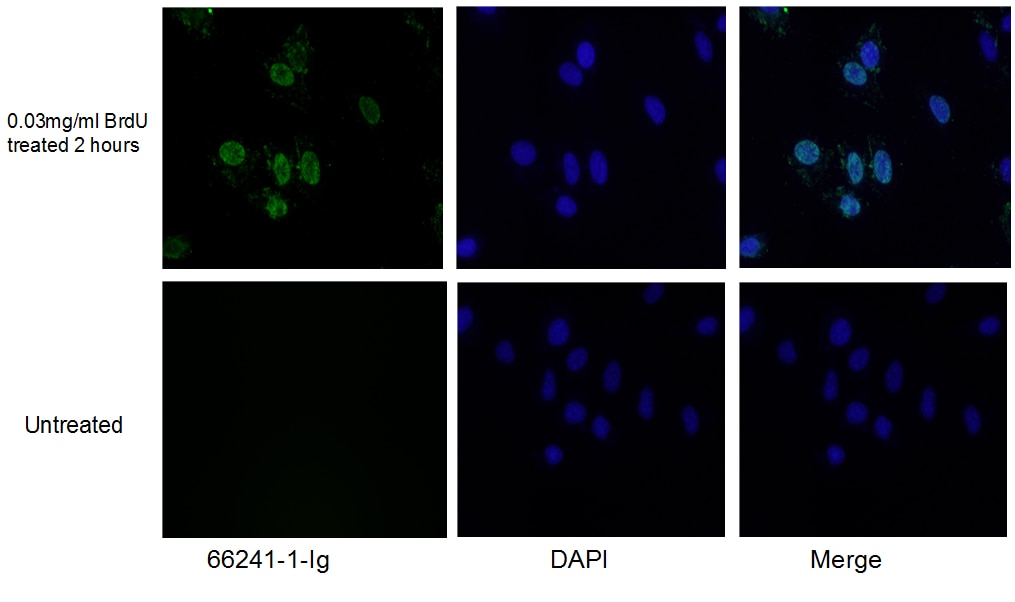Anticorps Monoclonal anti-BrdU
BrdU Monoclonal Antibody for IHC, IF/ICC, Indirect ELISA
Hôte / Isotype
Mouse / IgG2a
Réactivité testée
Humain, rat, souris
Applications
IHC, IF/ICC, Indirect ELISA
Conjugaison
Non conjugué
CloneNo.
1B10E12
N° de cat : 66241-1-PBS
Synonymes
Galerie de données de validation
Informations sur le produit
66241-1-PBS cible BrdU dans les applications de IHC, IF/ICC, Indirect ELISA et montre une réactivité avec des échantillons Humain, rat, souris
| Réactivité | Humain, rat, souris |
| Hôte / Isotype | Mouse / IgG2a |
| Clonalité | Monoclonal |
| Type | Anticorps |
| Immunogène | Small molecule |
| Nom complet | BrdU |
| Symbole du gène | |
| Identification du gène (NCBI) | |
| Conjugaison | Non conjugué |
| Forme | Liquide |
| Méthode de purification | Purification par protéine A |
| Tampon de stockage | PBS only |
| Conditions de stockage | Store at -80°C. 20ul contiennent 0,1% de BSA. |
Informations générales
Bromodeoxyuridine (5-bromo-2'-deoxyuridine, BrdU, BUdR, BrdUrd) is a synthetic nucleoside that is an analog of thymidine. It can be incorporated into the newly synthesized DNA of replicating cells (during the S phase of the cell cycle), substituting for thymidine during DNA replication. As such, BrdU is used for birth dating and monitoring cell proliferation. BrdU is a toxic and mutagenic substance. It triggers cell death, the formation of teratomas, alters DNA stability, lengthens the cell cycle, and has 0mitogenic, transcriptional and translational effects on cells that incorporate it. This antibody does not cross react with Thymidine.
Protocol for IHC:
https://www.ptgcn.com/protocol/66241-1-IgIHC.pdf
Protocol for IF:
https://www.ptgcn.com/protocol/66241-1-IgIF.pdf













